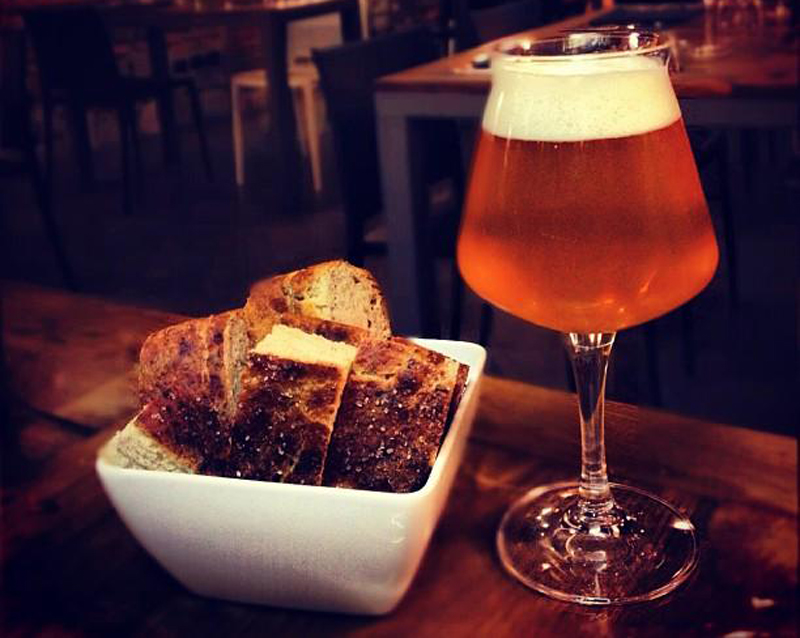Beer: The Drink Tuscan Food Has Been Waiting For

Papposileno, a restaurant in Italy, features 17 Belgian beers and 22 Italian beers, half of them from Tuscany. Photo courtesy Papposileno.
Imagine you had to introduce beer to an environment where it was all but unknown. People don’t drink much, but when they do drink, it’s almost always wine. So there are few pubs or bars—not as we know them—and hardly any selling draft beer. There are restaurants and cafes, and coffee shops that arguably serve similar functions, but there is no culture at all of sitting down together and consuming an alcoholic beverage that is long and cool.
Think about it: you’d have to design your beer completely differently. The first beer you’re ever going to sell is not going to be a pint from a tap; it’s going to be from a bottle. Your first customer is likely going to be a restaurant, and your first sale is almost certainly going to be consumed with a meal. Instead of trying to trade people up from bland mainstream beer, you’re going to be asking them to substitute your product for one of the world’s most celebrated wines.
So how would you design your beer? How would you package it? What would it taste like?
Initially, such a thought experiment might sound like a crazy idea. But for forty or fifty new craft brewers in Tuscany, Italy, this is reality.
Travellers have waxed lyrical about the Tuscan landscape for centuries. Every building nestles prettily in golden hills, bathed in magical liquid light. Vines present themselves in neat rows. Each cypress tree is positioned so perfectly against the clean blue sky, it’s as if the entire landscape has been art-directed.
Everywhere you go there are signs in English inviting you to come visit a winery or enoteca to enjoy anything from a free wine tasting to a sumptuous banquet. Tourists come from around the world to drink Chianti, the easy-going, fruity local wine. At first glance, it looks like the last place beer could thrive.
To do so, beer must take its cues from wine. Claudio D’Agnolo of Birrificio La Stecciaia is typical of Tuscan brewers in that his primary packaging format is bottles. “We used a sparkling wine bottle that’s been adapted for a crown cap closure,” Claudio explains to me in his immaculate, spotless brewery. “It has to look good on a restaurant table.”
Italian cuisine is fiercely regional, with local specialties wherever you go. That’s why Claudio—who built the brewery on his organic farm—looks to local ingredients to make his beers distinctive. He grows all kinds of grains here and uses as many of them as possible in his beers. La Farzotta (5.8%) is brewed with spelt, which lends it a delicate, fruity lemon palate, while the clovey, spicy Senatrice (6.8%) gains its character from durum wheat.
Like many of his contemporaries, all Claudio’s beers are soft and balanced, bottle conditioned with a smooth, almost creamy texture. And all of them are designed to be served with food.
“They run sommelier courses here,” says Giuseppe Peretti of CERB, the brewing school at Perugia University where Claudio D’Agnolo learned his craft. “There’s one session on foods that don’t pair with wine. They recommend water instead. Most of these dishes would work perfectly with beer. So, we have a lot of work to do.”
Spend a week driving around the Tuscan hills, and you’ll find beer creeping onto the menu wherever you go. Usually it’s just one, nestled at the end of the wine list. But it’s always an interesting beer worth trying, always brewed locally. This makes a refreshing change from restaurants around the world that still persist in offering locally sourced, quality produce in every single aspect of the menu except beer, where they seem to think it’s acceptable for a place with such high standards to offer one or two generic global brands.

This is great news. The last time I was in the region and asked for a local beer I was offered Bud. Good to hear they have branched out since then.